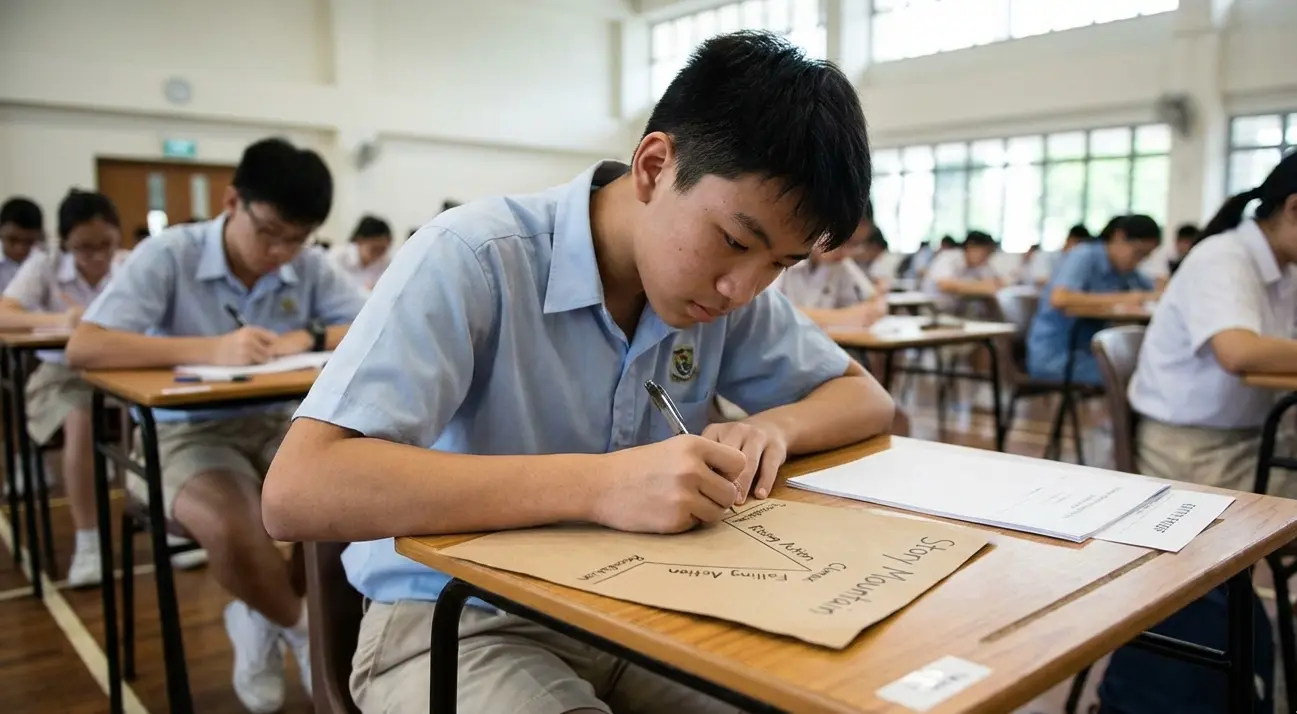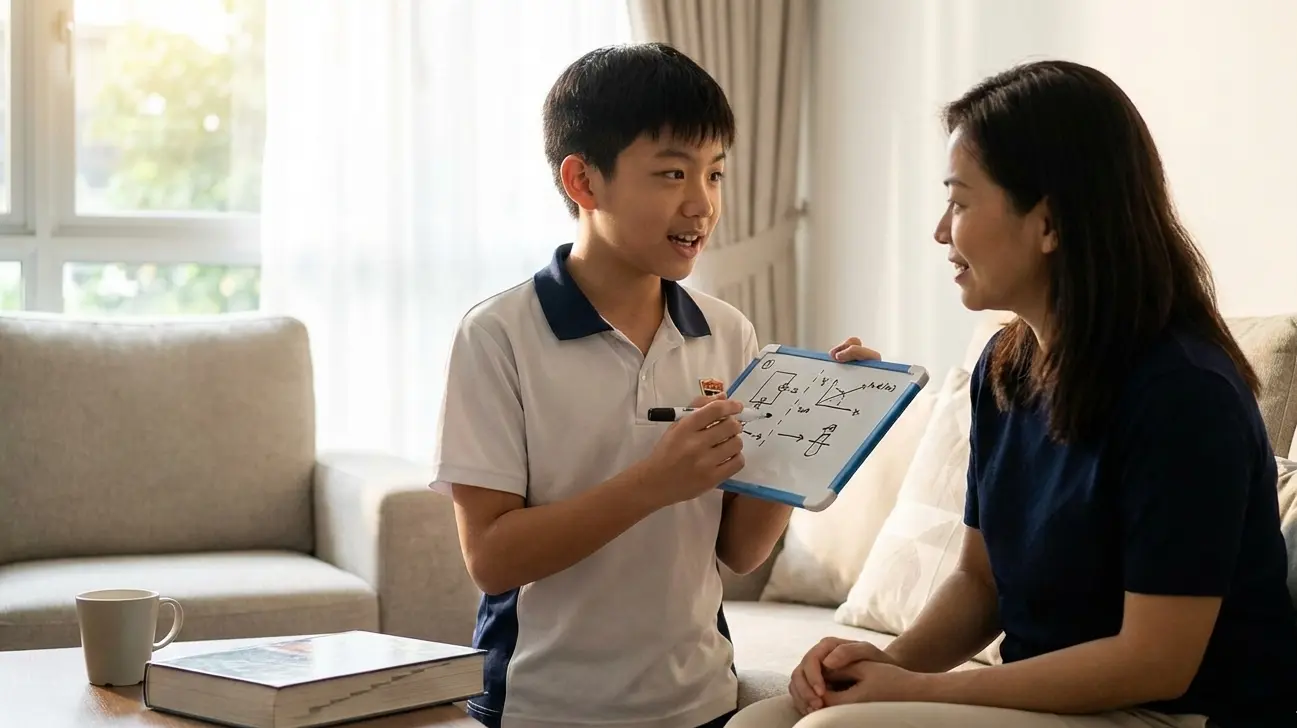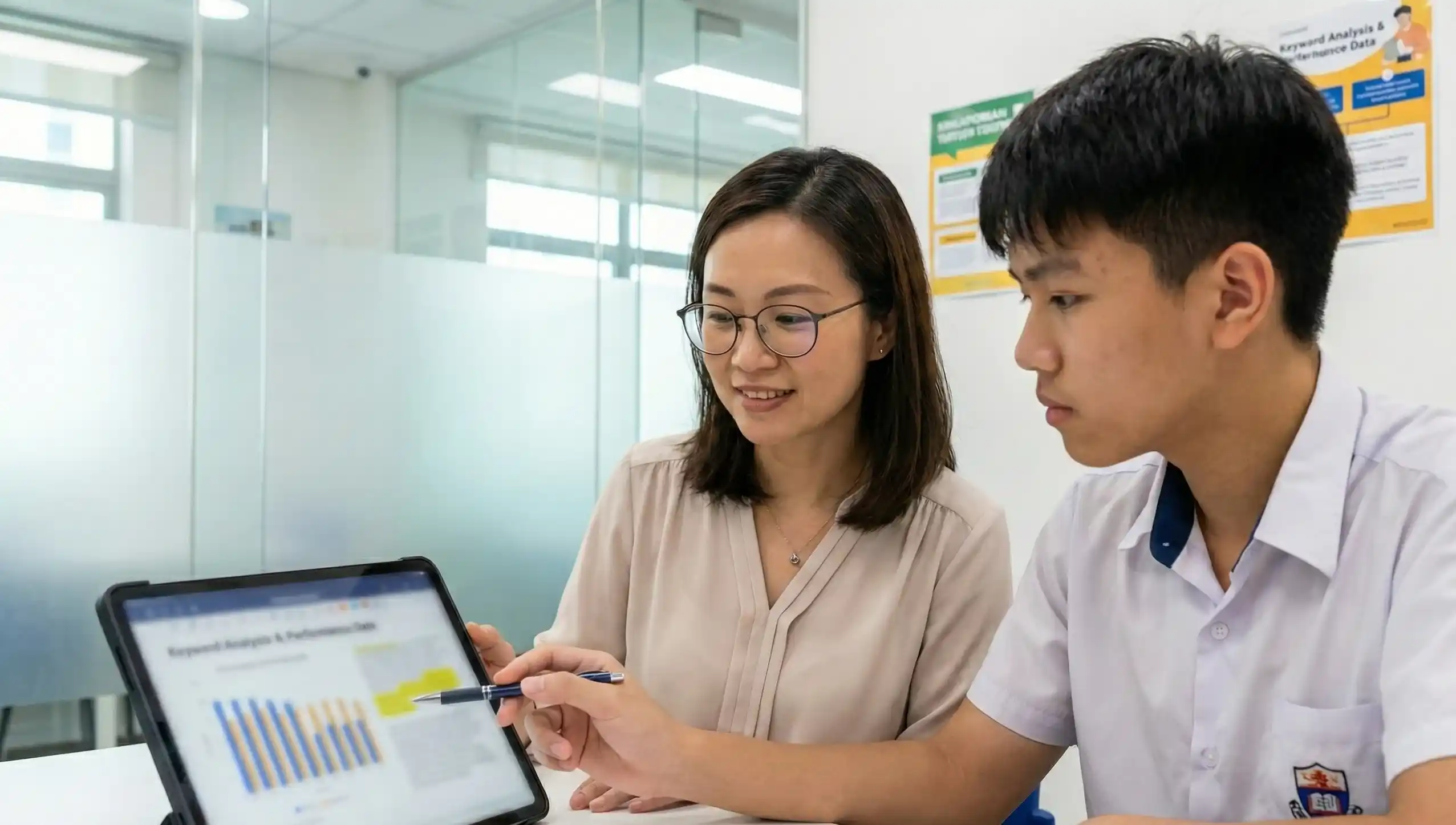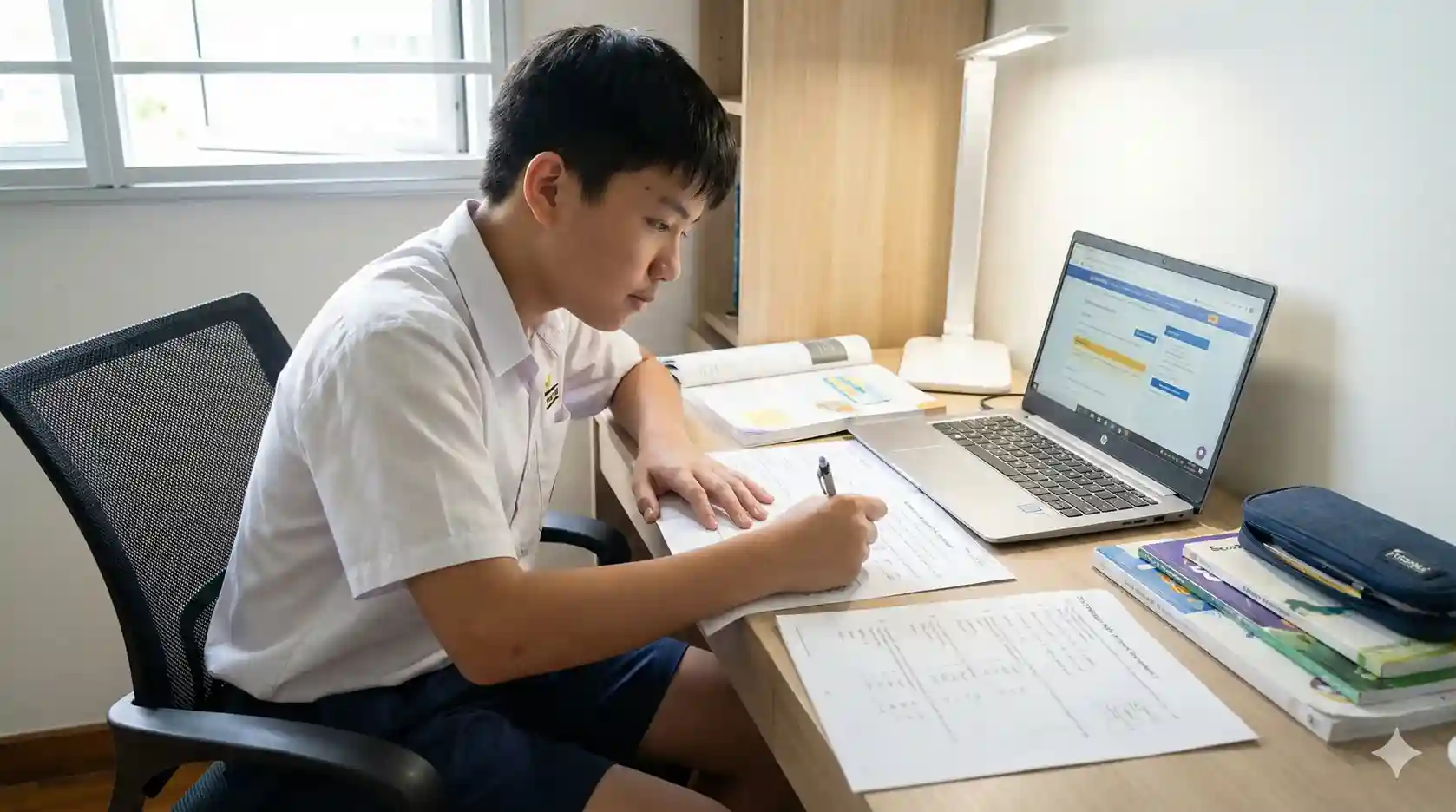Ask our Teachers: Last minute tips to excel in your O-Level Maths exam
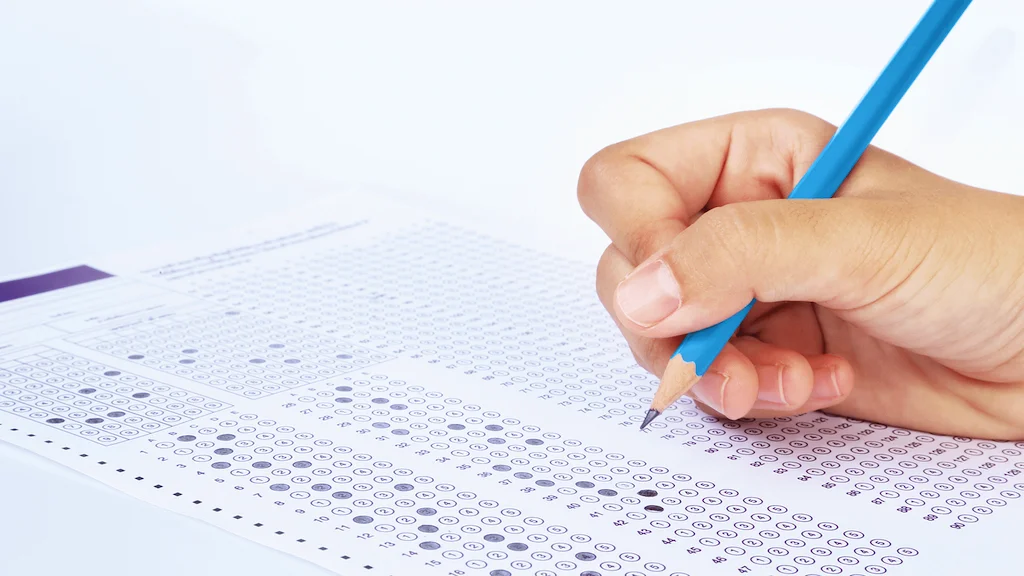
Well, this is it - your child has worked hard at school, started their revision weeks or months ago, and now they are finally ready to tackle their ‘O’ Level Mathematics papers at the end of a very busy year.
But their preparations shouldn’t consist of just revising their topics right to the last minute. From the night before the actual exam until the second they complete their last Maths paper in the exam hall, there are a few crucial tasks that your child should remember to carry out to maximise their chances of success.
We reached out to our Geniebook teachers - Syahiran, Kimberley, and Humphrey - to get their advice on what students like your child should be aware of before, during, and after their Maths papers. Read on!
Before the Maths exam
Preparing the tools
“The first thing every student should do the day before their Maths paper,” says Syahiran, “is to ensure that they have all the necessary equipment with them in the exam hall.” For Maths, this goes beyond just having a pair of pens and pencils ready.
Here’s the full list of items that they should pack in their pencil case:
-
At least two pens, dark blue or black ink
-
2B pencil & sharpener, OR a mechanical pencil using 2B pencil lead
-
Eraser
-
Standard length ruler (about 15 centimetres)
-
Long ruler (around 20-30 centimetres)
-
Approved scientific calculator
-
Compass & protractor (only for E Maths papers)
-
Curved ruler / French curve (Optional)
Adjust your body clock
Although it’s no secret that staying up late isn’t the best thing to do on the eve of exams, getting a good night’s sleep isn’t the only thing that students should do to prepare themselves physically for their papers. Sure, they might be wide awake and raring to go for exams scheduled in the morning, but what about the ones that are slated to follow after lunchtime?
“It’s easy to overlook the impact that meals have on our energy levels during exam days,” Humphrey says. “That drowsy feeling after a heavy lunch definitely has an effect on productivity and our ability to think clearly.” And since the four O-Level Maths papers will take place in the afternoon this year, this factor deserves some attention.
The solution? Try getting your child to adapt to the challenge by attempting practice papers at home right after a meal so they can get used to the conditions of the actual exam. Meanwhile, on the actual day of the Maths paper, have them settle for a lighter lunch just before heading to the exam hall. That way, their minds will be kept razor-sharp and ready to tackle each question. Bring along your identification
Besides bringing along a packed pencil case, students should always remember to take identification documents with them for the exam. This is either an Identification Card (i.e. NRIC for Singapore students), or a proof-of-entry document.
We recommend making sure that the identification card or document is stored in your child’s bag the night before their exam. Nobody should have to go through the shock of leaving theirs at home by mistake when they’re already waiting outside the exam hall! Be early, not punctual
“Students may find it tempting to time their journey so that they reach the exam venue just before the exam is slated to begin, but that can be very risky,” says Kimberley. Indeed, there can be any number of unexpected factors that may disrupt their journey, from traffic jams to a sudden tummy ache caused by excess anxiety.
To help make sure they reach the exam hall in time, there’s only one solution: leave the house earlier. Kimberley estimates that targeting to reach at least 30 minutes before the start of the paper will allow students enough time to be punctual. And if they do manage to arrive well before the exam begins, they can always use the time to do some final revision while they wait.
Attempting the Maths exam
The day has come and your child is finally granted access to the exam hall. The invigilator starts counting down: Three, Two, One. The exam has begun!
So, what sort of advice do our teachers have for your child here? Write down the formulas
It’s time to unpack every formula your child has learned and remembered in his revision. “Each student will be issued a formula sheet to go along with their question papers.” Syahiran says. “At the start of the Maths exam, it’s a good idea to spend the first 5 to 10 minutes writing down any additional formulas that they may find helpful, especially the ones they have trouble recalling!”
Below, we have a suggested list of formulas to include in the formula sheet. For E Maths:
-
Formula for simple interest
-
Formula for arc length and sector area in degrees
-
Mensuration formula for prisms and cylinders
-
Congruence and similarity tests for triangles
-
Formula for sum of interior angles of polygons
-
Alternate form of cosine rule formula
-
Formula for sine and cosine of obtuse angles
-
Conversion from radian to degrees (and vice versa)
For A Maths:
-
Cubic identities
-
Half angle formula for Sine and Cosine
-
R-formula for finding R and α
-
Formula for finding radius and centre of circle given general form of equation of circle
-
Conversion from radians to degrees (and vice versa)
-
General shapes of trigonometric graphs
Don’t get stuck; keep moving
Time is precious, especially so during exams. Unfortunately for many students, it’s easy to get sucked into a tough question and hyperfocus on it to completion, only to discover later that it took almost 10 minutes of their time.
“Spending extra attention on a question early on in an exam is particularly risky,” says Kimberley, “because students may not be budgeting enough time for other questions in the paper, especially if there’s another challenging one that may appear later on.”
To make sure your child doesn’t run out of time before answering all questions adequately, she suggests spending no more than 90 seconds for every single mark awarded by a question. In other words, students should spend no longer than 1 ½ minutes’ worth of attention for a 1-mark question, and no longer than 6 minutes for a 4-mark question.
If your child finds themselves with extra time left after completing the paper, they can use it to check their solutions line by line, and polish them up where needed. Always remember to include the relevant angle properties for geometry questions!
After the Maths exam
It’s done! They’re free! After so much stress and endless studying, your child has finally finished their first Maths paper.
After the first Elementary Maths paper on 17 October, your child may prepare for the second Elementary Maths paper on 20 October by doing targeted revision on the concepts that were not tested in the first paper during the days in between.
Students taking the Additional Maths papers will need to remain focused on their Additional Maths revision as they will only be sitting for their papers the following week. Gaining an edge
After completing the first paper for either E Maths or A Maths, Humphrey suggests that students may approach their teachers to gather information about what the next paper might look like. “It may help to check with their E Maths teachers or GenieAsk teachers on the likely topics and concepts to be tested in Paper 2,” he says. “The tips that they offer can help students make their decision on what to focus on in their next round of revision.” Keep your chin up
At the same time, it’s also important for your child to distance themselves from the previous exam, especially if they feel that they did not do well enough for it. “The most important thing is not to feel discouraged.” Syahiran says. “Pick yourself up and focus on the next paper. Your performance for the second paper can make all the difference. Don’t give up!”
 SG
SG  VN
VN 
